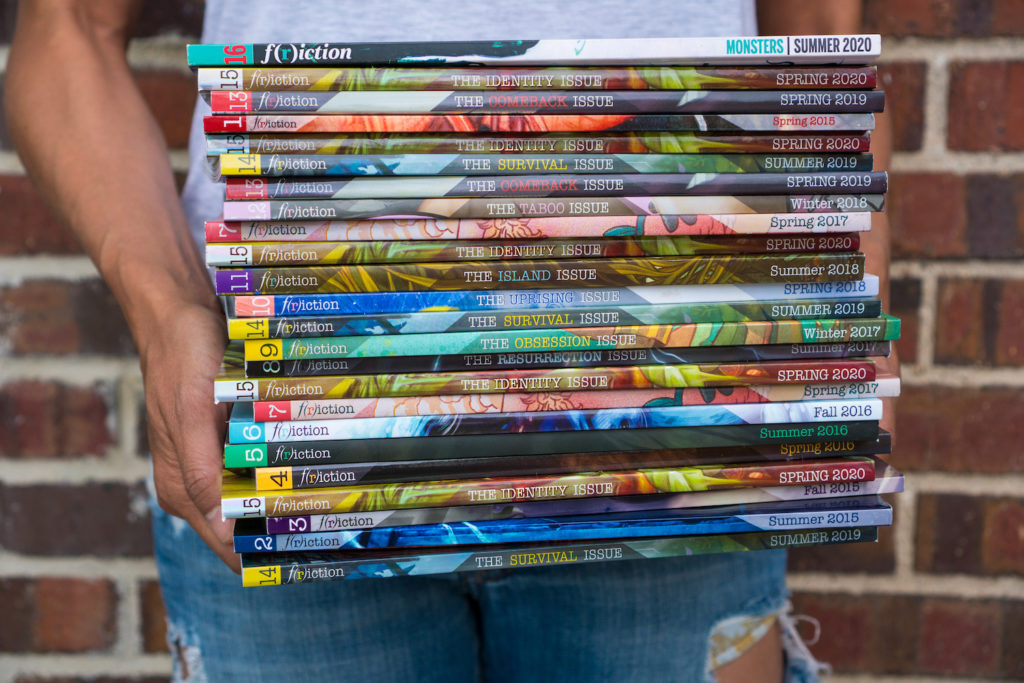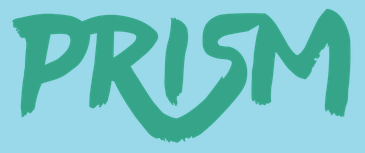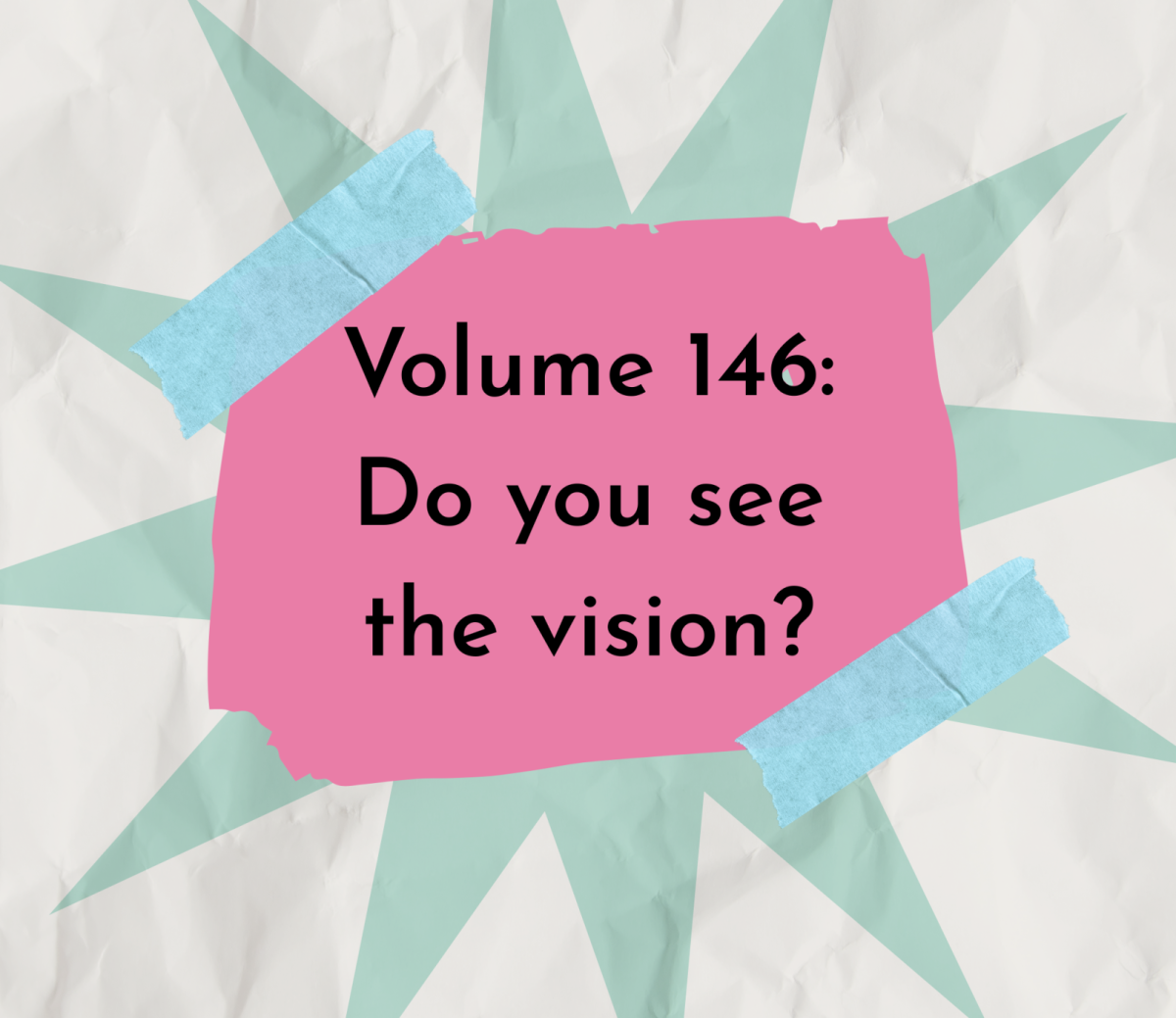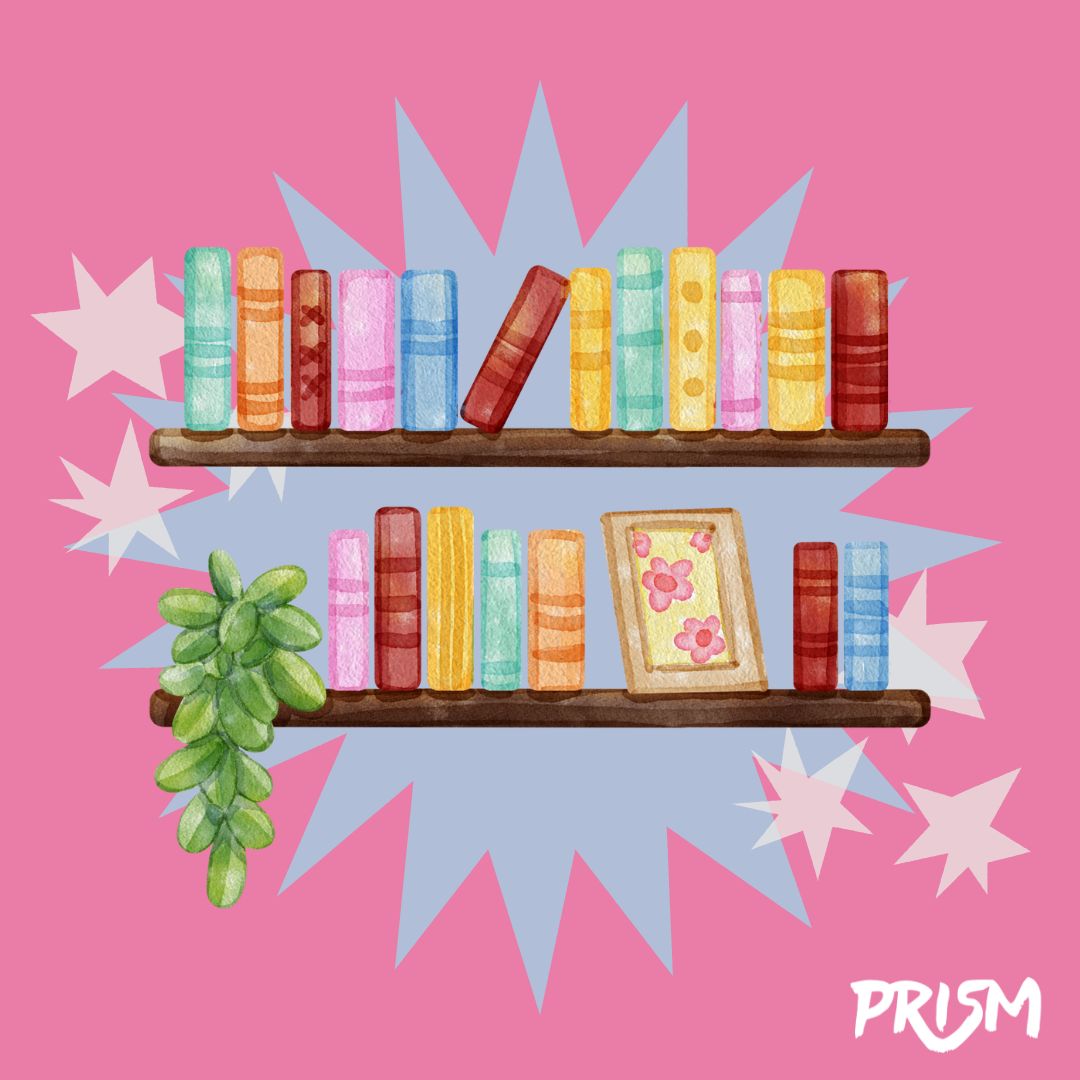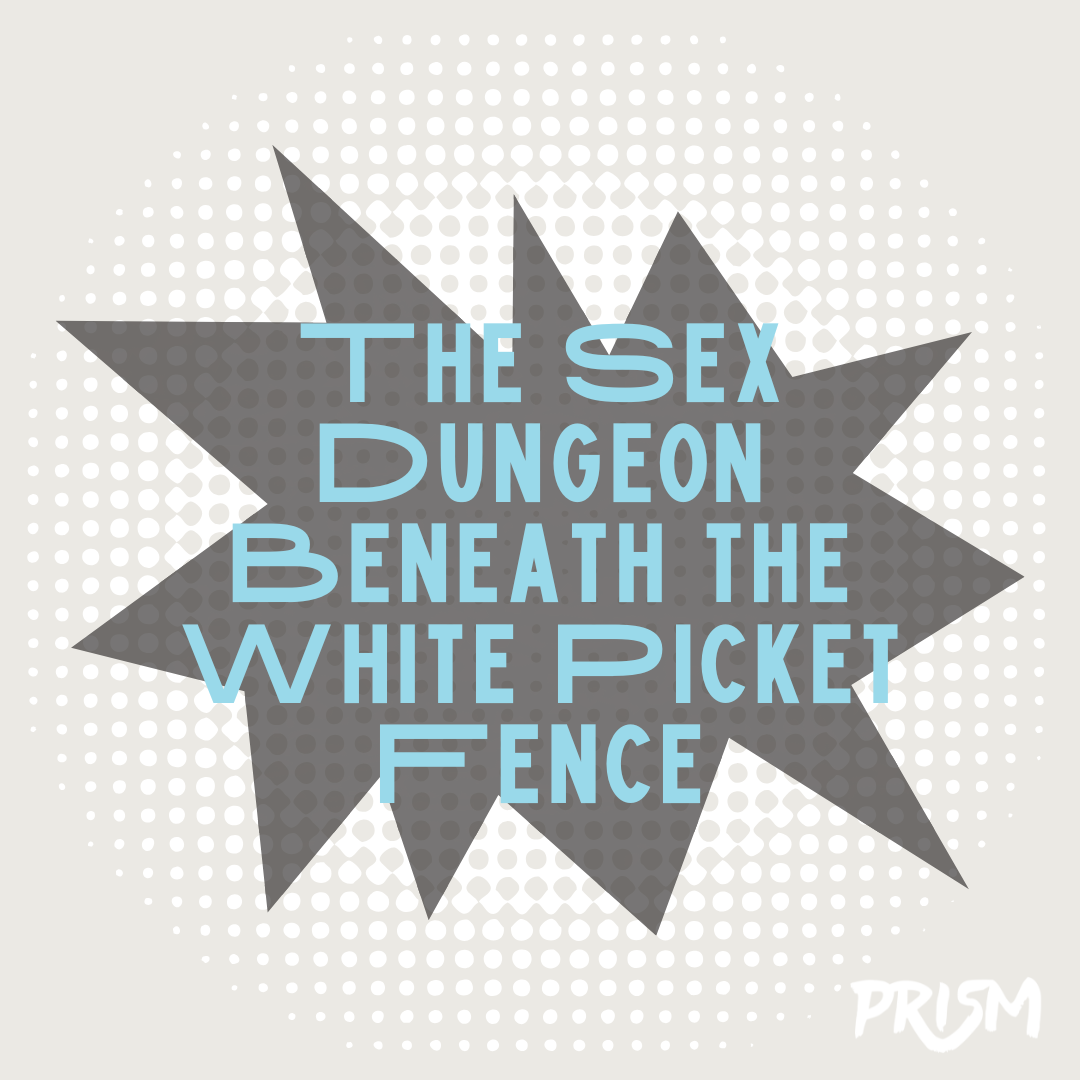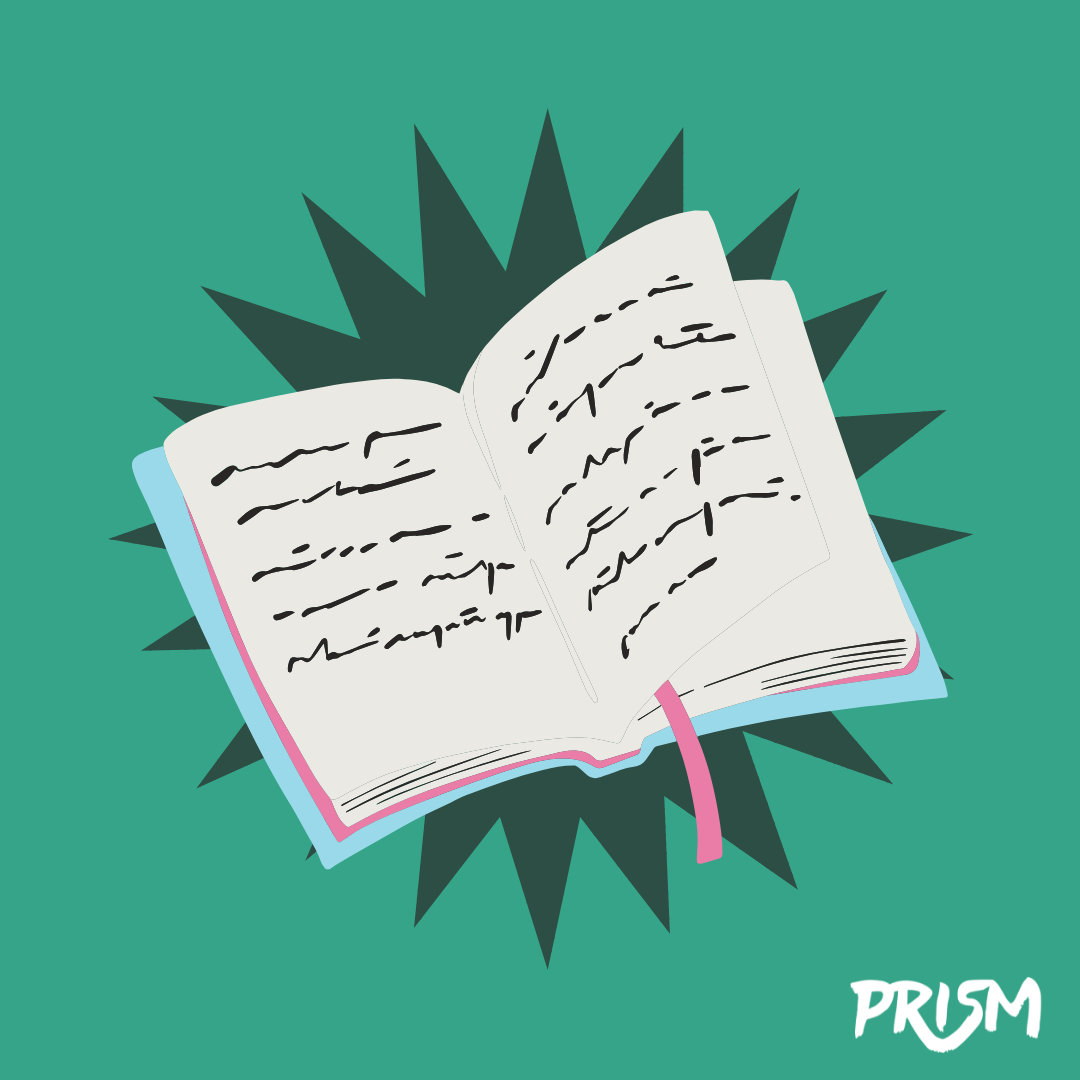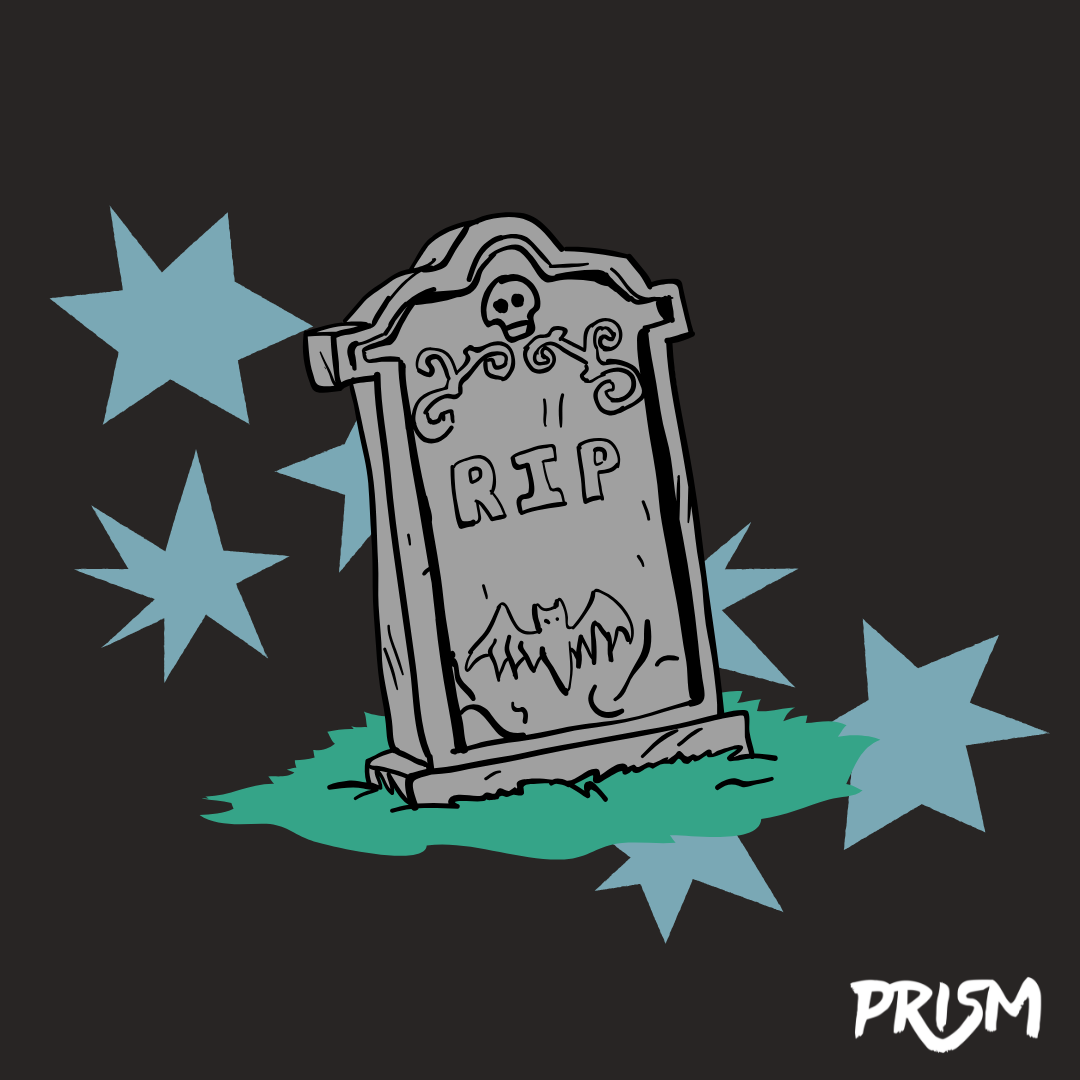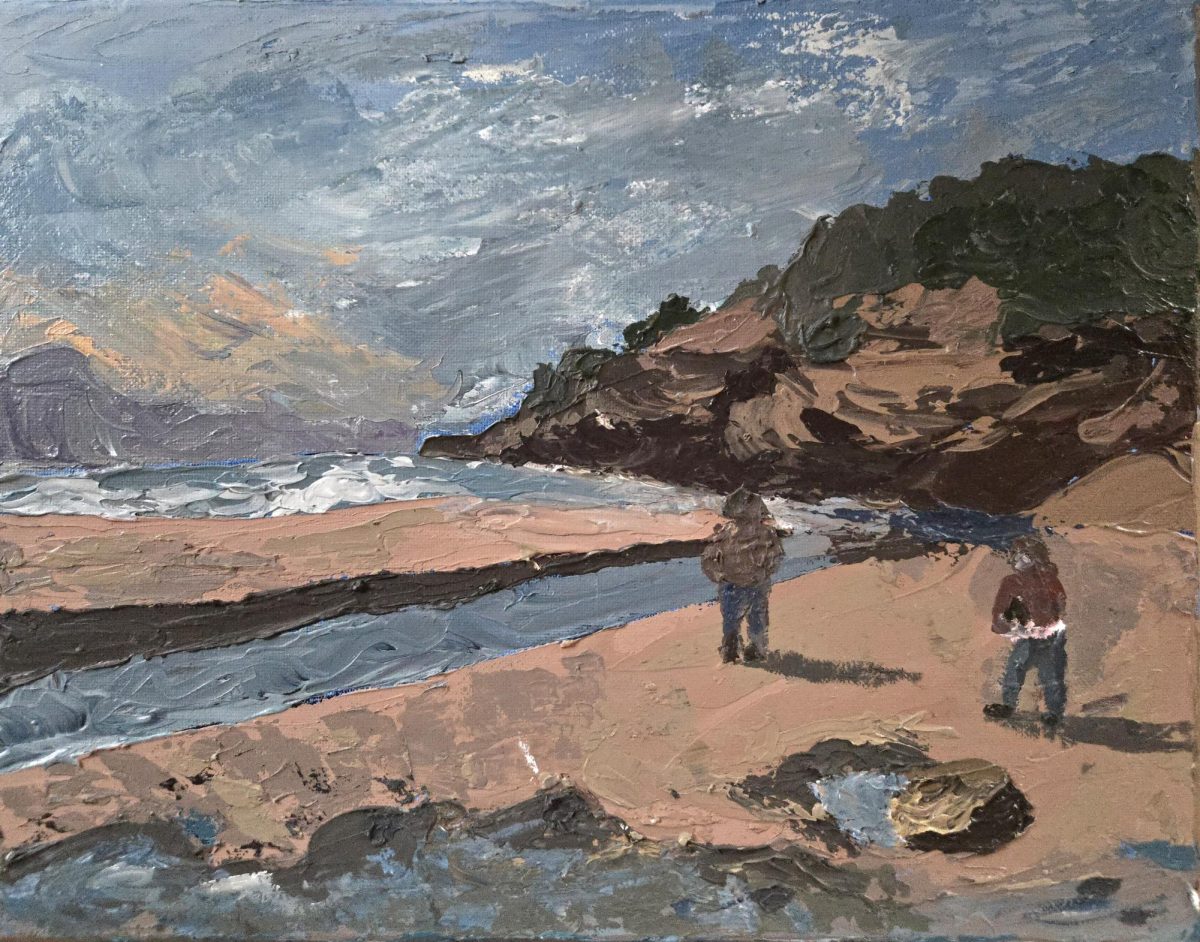F(r)iction is a literary anthology that empowers unconventional, weird, and diverse writing. It’s in their mission statement that they believe “great publishing should push the boundaries of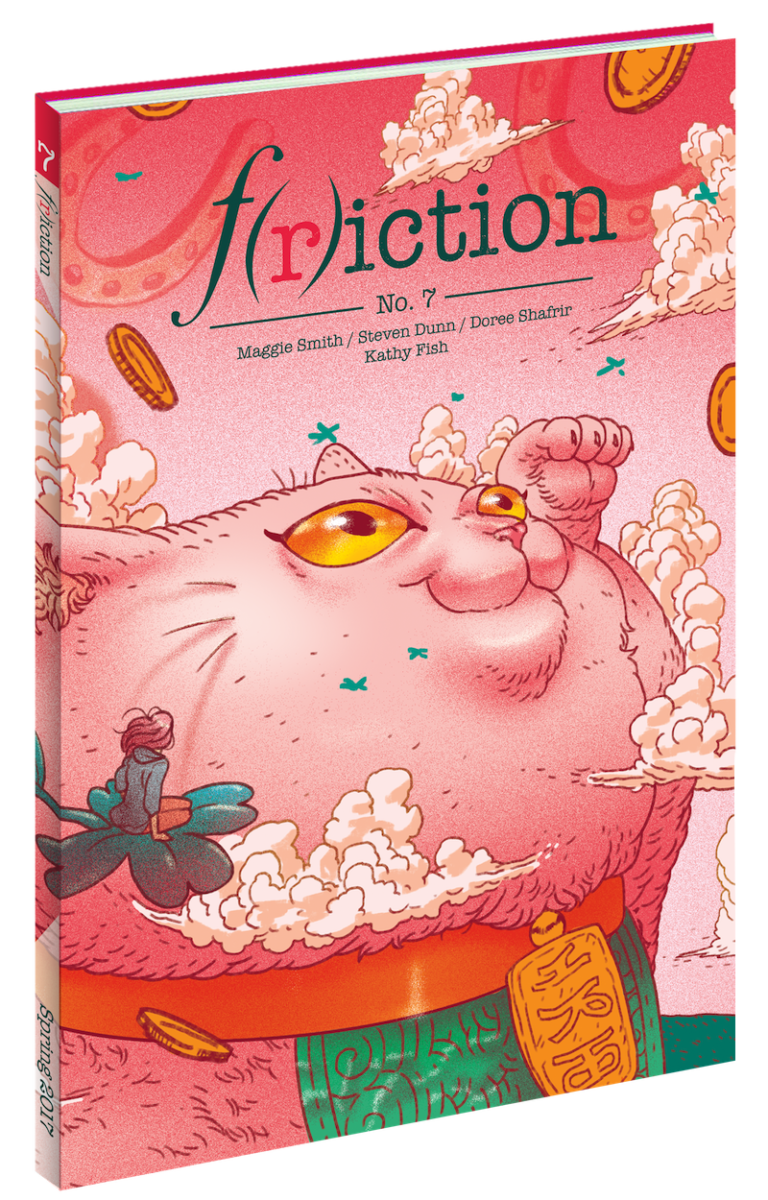 literary convention and advocate for new, emerging, and marginalized voices.” It was founded by Dani Hedlund in 2015 to house writing that pushes the boundaries of literature. F(r)iction fills the eccentric niche in the literary world alongside magazines like Abandon Journal and Strange Horizons. As the editor-in-chief of a university lit mag and a frequent writing submitter myself, this journal stands out among others as accepting more hybrid works — both in form and genre. This magazine doesn’t want your perfectly polished literary essay written for a standard undergraduate English class, but rather your curious speculative fiction, bizarre creative nonfiction, funky comic strips, or whatever else might otherwise forever live in the back of your favorite middle school composition notebook.
literary convention and advocate for new, emerging, and marginalized voices.” It was founded by Dani Hedlund in 2015 to house writing that pushes the boundaries of literature. F(r)iction fills the eccentric niche in the literary world alongside magazines like Abandon Journal and Strange Horizons. As the editor-in-chief of a university lit mag and a frequent writing submitter myself, this journal stands out among others as accepting more hybrid works — both in form and genre. This magazine doesn’t want your perfectly polished literary essay written for a standard undergraduate English class, but rather your curious speculative fiction, bizarre creative nonfiction, funky comic strips, or whatever else might otherwise forever live in the back of your favorite middle school composition notebook.
For the Readers
This is easily my favorite literary magazine to read in my free time, so it’s always on my list of recommendations. I enjoy works across all genres — fiction, nonfiction, and 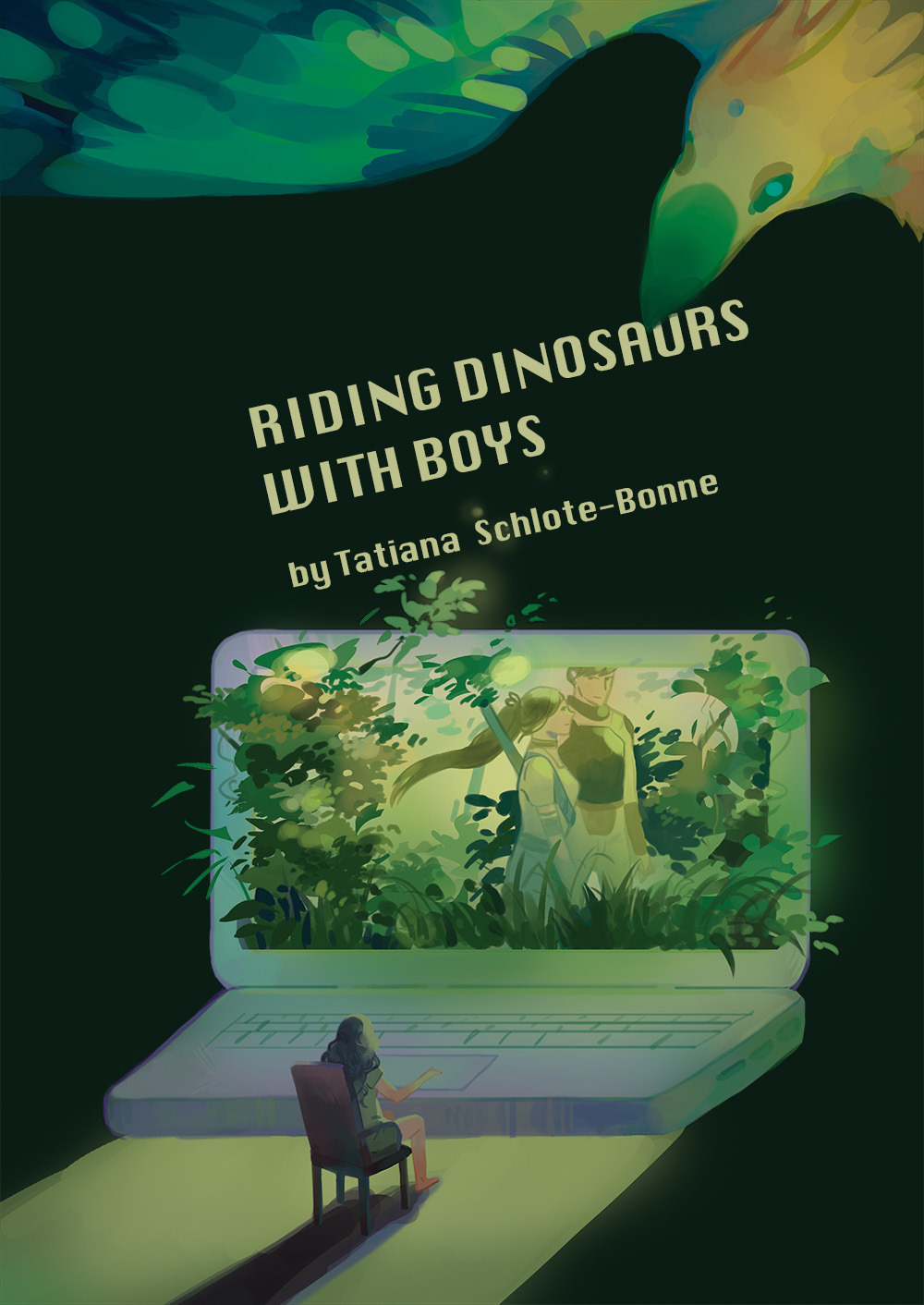 poetry — but I lean hard into science fiction, fantasy, and creative nonfiction (CNF) pieces with fantastical quirks. F(r)iction caters to this offbeat taste while also delivering quality storytelling. A CNF story I come back to in F(r)iction is “Riding Dinosaurs with Boys” by Tatiana Schlote-Bonne. It’s a good example of the types of work they publish, as it’s not your typical memoir-style essay. The narrator goes through their experience of falling in love with someone they met over the internet while playing a video game. It follows two strands of reality: the narrator’s daily life with her husband, and in-game scenes with this online suitor. Another great feature of F(r)iction is that they find talented artists to create graphics to pair with their stories, as seen above. This story’s art piece was created by Kieu Vo . Like “Riding Dinosaurs with Boys,” there is other free content to read on their site, but the meat of the publication is in their printed books. It costs $45 for a year’s subscription — which gives you access to the digital archives and they send you three books per year at no extra shipping expenses if you’re in the United States or United Kingdom.
poetry — but I lean hard into science fiction, fantasy, and creative nonfiction (CNF) pieces with fantastical quirks. F(r)iction caters to this offbeat taste while also delivering quality storytelling. A CNF story I come back to in F(r)iction is “Riding Dinosaurs with Boys” by Tatiana Schlote-Bonne. It’s a good example of the types of work they publish, as it’s not your typical memoir-style essay. The narrator goes through their experience of falling in love with someone they met over the internet while playing a video game. It follows two strands of reality: the narrator’s daily life with her husband, and in-game scenes with this online suitor. Another great feature of F(r)iction is that they find talented artists to create graphics to pair with their stories, as seen above. This story’s art piece was created by Kieu Vo . Like “Riding Dinosaurs with Boys,” there is other free content to read on their site, but the meat of the publication is in their printed books. It costs $45 for a year’s subscription — which gives you access to the digital archives and they send you three books per year at no extra shipping expenses if you’re in the United States or United Kingdom.
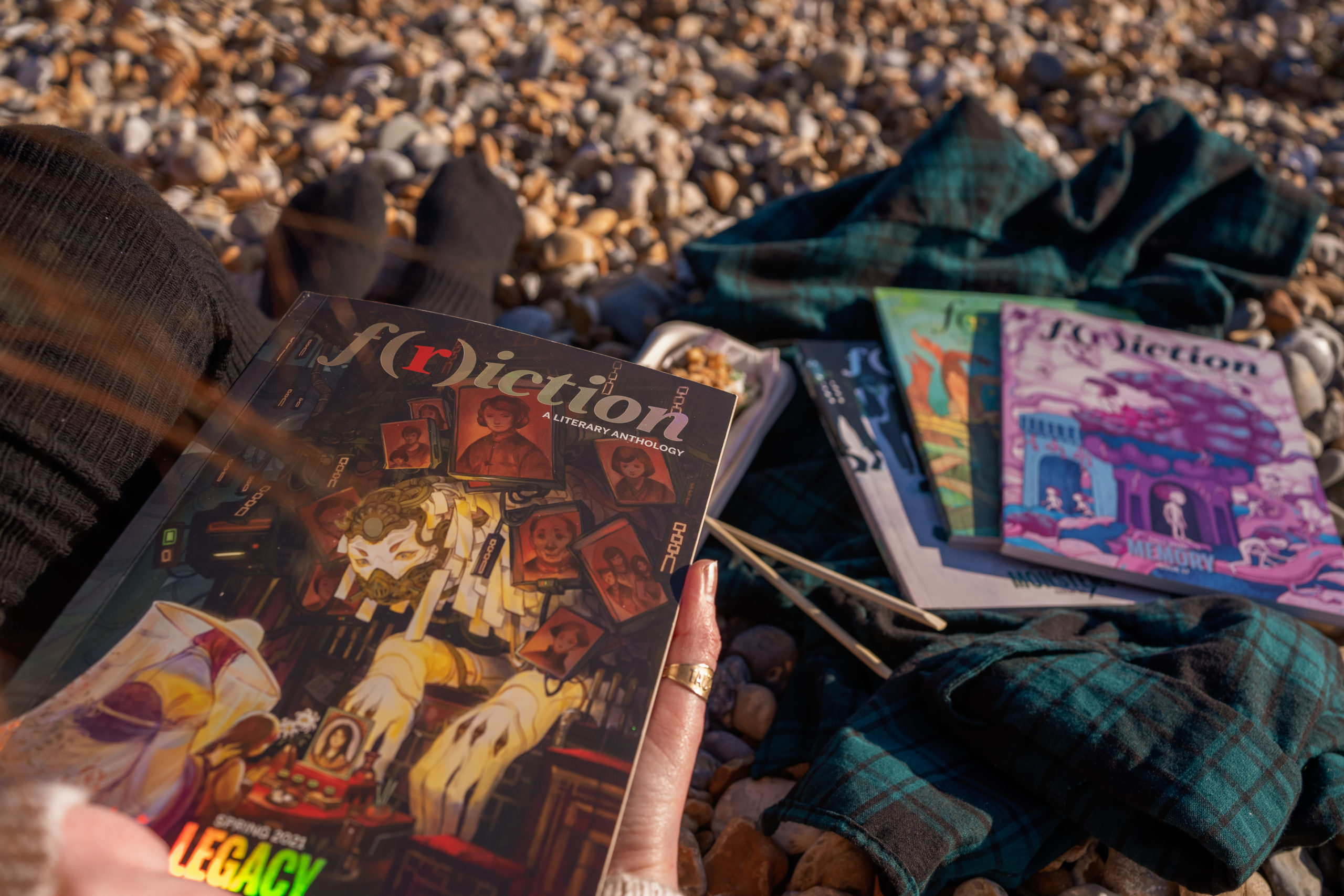
Overall, the F(r)iction website is pretty user-friendly, whether looking for online content to read or setting up a subscription to obtain physical copies. The home page is overflowing with beautiful artwork. The top of the page showcases the most recent cover art, and once you hit about a third of the way down, it offers you a mix of blog posts from their editors, CNF essays, and other stories 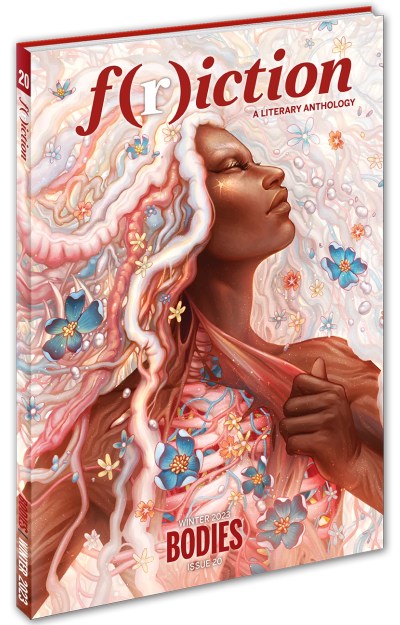 you can dive right into. These posts are engaging before you even click on them, as their icons are thumbnails of the original art made for that article. The bottom third of the page gives more information about the current issue and features sneak peeks of the editor’s note, a short story, and poetry that are in the printed magazine. If the user hovers over the top bar of the screen, many more options become available to explore, titled “F(r)iction Series,” “F(r)iction Log,” “Submit,” “Literary Tarot,” and “About.” If you click on the “About” section and scroll down to the masthead, you can see that it is run by a huge team of editors and interns who design and curate this whimsical and strange literary magazine.
you can dive right into. These posts are engaging before you even click on them, as their icons are thumbnails of the original art made for that article. The bottom third of the page gives more information about the current issue and features sneak peeks of the editor’s note, a short story, and poetry that are in the printed magazine. If the user hovers over the top bar of the screen, many more options become available to explore, titled “F(r)iction Series,” “F(r)iction Log,” “Submit,” “Literary Tarot,” and “About.” If you click on the “About” section and scroll down to the masthead, you can see that it is run by a huge team of editors and interns who design and curate this whimsical and strange literary magazine.
For the Writers
As an interdisciplinary writer, I tend to submit my work across a spectrum of journals in hoping that one of them sticks. With the openness that F(r)iction has in what they are searching for and the strength to advocate for new forms of writing while still maintaining a level of literary prestige, it’s a good match for writers who want to experiment across genres. Their submission guidelines are easy to find under the “Submit” section from the dropdown menu and links to their submittables. F(r)iction has opportunities to submit to their physical magazine (series), online content (log), contests, and a group writing project called “Dually Noted.” What’s unique to F(r)iction is that they have a separate section labeled “What We Look For.” This page goes beyond essay guidelines like font size, spacing, and word count. Normally, there is a prompt to read other works that a lit mag has published, but F(r)iction has a page dedicated to describing the writing they want to raise on their platform.
“For our print magazine, we accept short fiction, flash fiction, creative nonfiction, and poetry—regardless of genre, style, or origin. Experimental, nontraditional, and boundary-pushing literature is strongly encouraged. Show us your wildest and weirdest! To get an idea of the kind of work we look for, our editors have put together these helpful tips.”
For the Deep Divers
Overall, there is only one thing I would recommend F(r)iction to look into changing in order to make their site even easier to navigate. When I first saw the drop-down menu, there were so many choices that I couldn’t tell which sections were for the print mag or for the website publications. It may bring more clarity to label the sections as “Book” or “Print” rather than the current “Series.” They could also label the “Log” section as “Digital” or “Online,” but I think the distinction for one of them would be sufficient.
If you’re interested in getting involved with F(r)iction, they are run by the Brink Literary Project, which is a “storytelling nonprofit” whose main goals are to empower underrepresented voices, mentor writers, and increase global literacy. This project offers remote publishing internships that would include working with F(r)iction. This journal does more than publish good work; it also cares about its readers.
